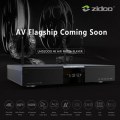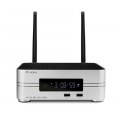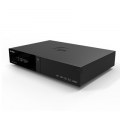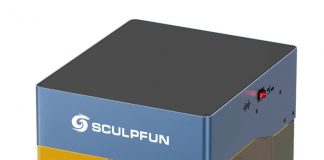ZIDOO Z9S
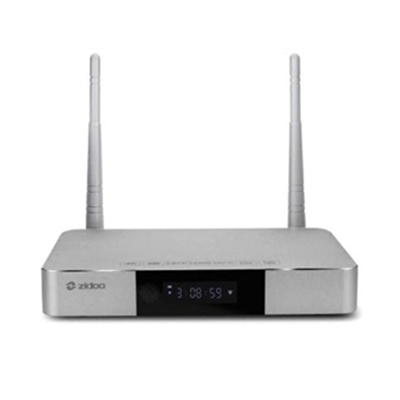
-
1: CPU - Realtek RTD1296DD ARM Cortex-A53 Quad-Core
-
2: GPU - Mali T820 MP3 Player
-
3: 2 GB DDR 16 GB eMMC
-
4: Power supply - DC 12V / 3A
-
5: 3.5mm RS232, IR receiver
Zidoo Z9S TV Box
The Zidoo Z9S is one of the first Realtek RTD1295 based TV boxes products to come onto the market, and it has to its credit a very striking set of features, such as simultaneously running Android 6.0 and OpenWrt, HDMI connection for recording videos and PiP, a SATA external interface , 4K multimedia support including HDMI 2.0 output, 4K at 60fps H.265 and VP9 & 4K 24Hz H.264 video decoding, as well as HDR and 3D support.
The device includes a SATA cable for 2.5 “laptop hard drives or SSDs, an HDMI cable, a 12V / 3A power source that should be enough to handle the SATA disk as well as a USB 3.0 drive, a laser remote control infrared with learning function for the infrared ray, 2 large Wi-Fi antennas, a warranty card and a “Simple Manual” in English of the Zidoo Z9S.
The front panel includes a VFD screen and a window to receive the infrared signal from the control, while one side includes the SATA interface, a USB 3.0 port and two USB 2.0 ports. The back panel has two connectors for Wi-Fi antennas, a Gigabit Ethernet port, HDMI input and output, an AV plug (composite + stereo audio), optical S / PDIF, a hole to recover the firmware, a tray for Micro SD, the power plug and a mechanical switch on and off.
The shield is soldered to the card, so I did not try to remove it. The back of the card reveals the Micro SD tray, the Genesis Logic GL852G 4-port USB hub, and a Titan Micro TM1628 LED driver found on the smallest electronic card used for the front screen of the device.
Again there is a large shield soldier in the main ICs, so we can not check the SoC, the RAM or the Emmc FLASH chips. But if we get a battery for the RTC, the Realtek RTL8821AU USB 2.0 802.11ac, the Bluetooth 4.0 chip, and a transformer SG24002 10/100 / 1000M to Gigabit Ethernet (The GbE PHY and the MAC are inside the chip RTD1295).
The serial console / UART head seems to be located between the USB 3.0 and SATA ports. The SATA port must be a “true” one since the SATA is supported natively by SoC Realtek RTD1295.
SPECS
Product Details
| Features |
OS - Android 7.1 + OpenWRT (NAS) work simultaneously CPU - Realtek RTD1296DD ARM Cortex-A53 Quad-Core GPU - Mali T820 MP3 Player Memory - 2 GB DDR Internal storage - 16 GB eMMC |
| Specification |
Brand: ZIDOO Model: X9S Type: TV Box System: Android 6.0 Processor: Realtek RTD1295 CPU: Cortex A53 Core: Quad Core GPU: ARM Mali-T820MP3 RAM: 2G RAM RAM Type: DDR3 ROM: 16G ROM Max. Extended Capacity: 32G TV Box Features: Antenna,5.1 Surround Sound Output Decoder Format: H.263,H.264,H.265,HD MPEG4 Video format: 4K,4K x 2K,AVC,AVI,DAT,FLV,H.263,H.264,H.265,MKV,MPEG,MPEG-1,MVS,RM,RMVB,RV,TP,TS,VP6,VP8,VP9,WMV Audio format: AAC,AC3,ACC,AFE,APE,DDP,DTS,HD,MP3,MPEG,OGG,RM,TrueHD,WAV Photo Format: BMP,GIF,PNG,TIFF Support 5.1 Surround Sound Output: Yes 5G WiFi: Yes Bluetooth: Bluetooth4.0 Power Supply: Charge Adapter Interface: AV,DC Power Port,HDMI,LAN,Optical,Reset Port,SATA,TF card,USB2.0,USB3.0 Antenna: Yes Language: Multi-language HDMI Version: 2.0 Other Functions: 3D Games,3D Video,DLNA,ISO Files,Miracast,NTSC,PAL,External Subtitle External Subtitle Supported: Yes HDMI Function: CEC,HDCP RJ45 Port Speed: 1000M System Bit: 64Bit Power Type: External Power Adapter Mode Remote Controller Battery: 2 x AAA batteries Product weight: 0.4180 kg Package weight: 1.1600 kg Product size (L x W x H): 18.80 x 12.80 x 2.50 cm / 7.4 x 5.04 x 0.98 inches Package size (L x W x H): 20.50 x 16.80 x 8.80 cm / 8.07 x 6.61 x 3.46 inches |
REVIEWS
Disclaimer Note
Ratings are based on objective reviews from our users.



